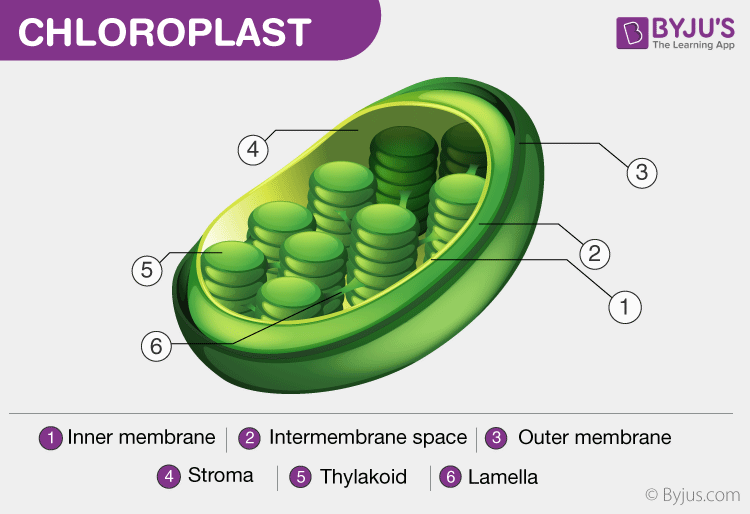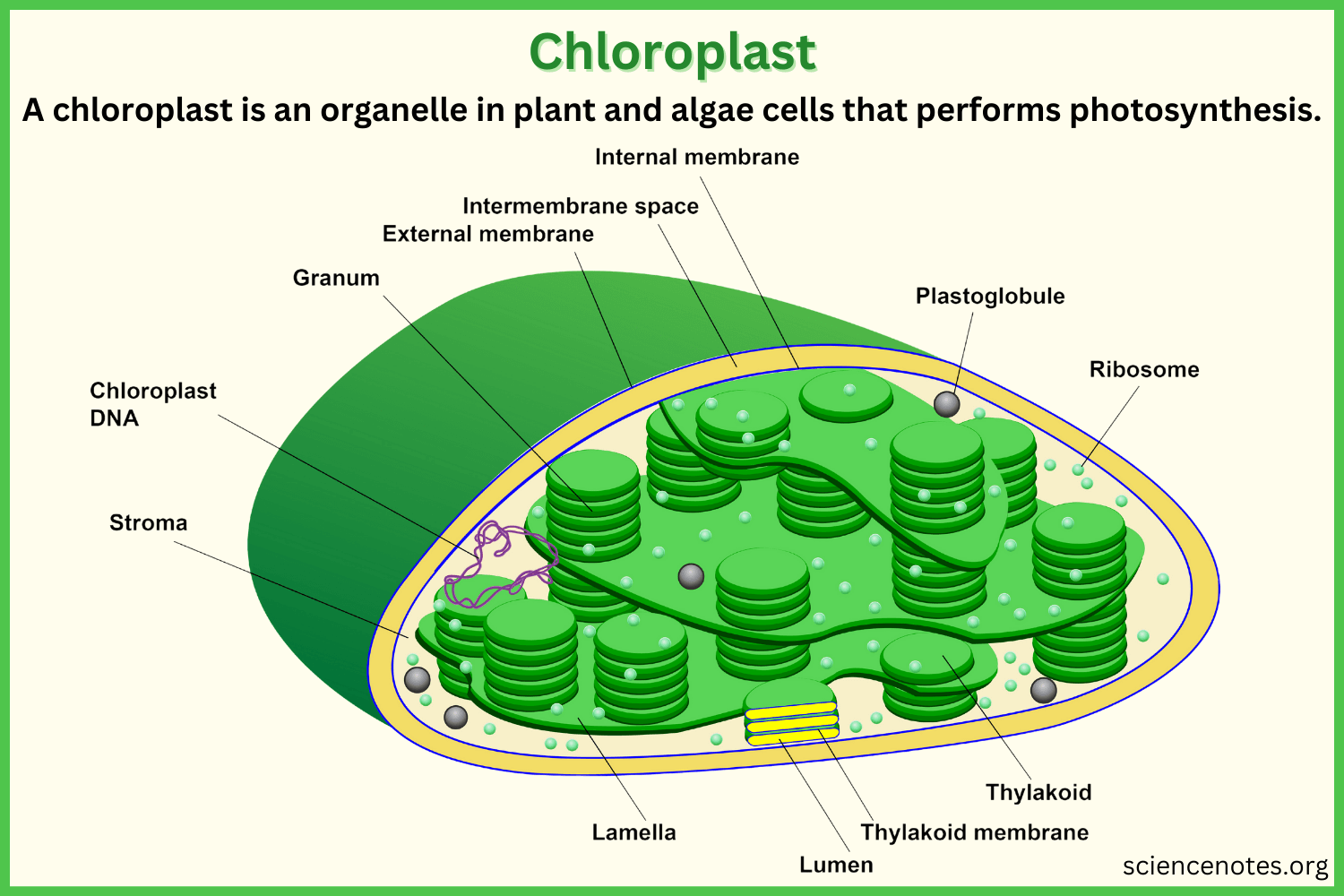B2.2: Organelles and Compartmentalization | IB Biology HL
1/22
Earn XP
Description and Tags
Name | Mastery | Learn | Test | Matching | Spaced |
|---|
No study sessions yet.
23 Terms
Define organelle.
B2.2.1: Organelles as discrete subunits of cells that are adapted to perform specific functions
An organelle is a discrete structure within a cell that is adapted to perform a specialized function.

List organelles and those enclosed by a single membrane and a double membrane.
B2.2.1: Organelles as discrete subunits of cells that are adapted to perform specific functions
Organelles enclosed by a single membrane:
Endoplasmic reticulum
Vacuole
Lysosome
Golgi Apparatus
Organelles enclosed by a double membrane:
Nucleus
Mitochondria
Chloroplast
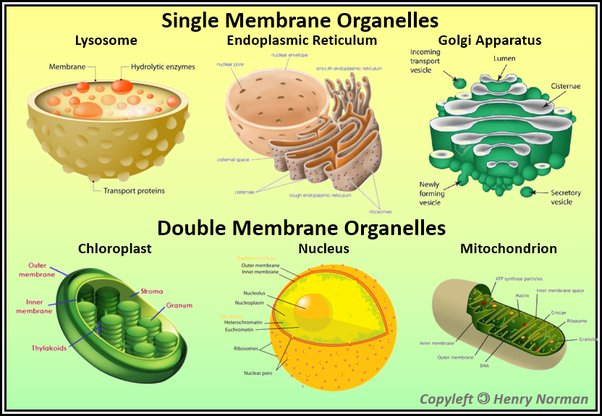
Outline the reason why the cell wall, cytoskeleton and cytoplasm are not considered to be organelles.
B2.2.1: Organelles as discrete subunits of cells that are adapted to perform specific functions
The cell wall is not considered to be an organelle because it is not in the cell - it is extracellular.
The cytoskeleton is not considered to be an organelle because it is composed of many different filaments and tubules. Therefore, it is not a discrete structure.
The cytoplasm is not considered an organelle because it is made of cytosol (a liquid part in the cytoplasm, 80% water). Thus, the cytoplasm is not specialized to perform a specific function.
Outline the benefits of DNA in the nucleus being compartmentalized from the cytoplasm.
B2.2.2: Advantage of the separation of the nucleus and cytoplasm into separate compartments.
The nucleus allows important cellular processes to take place more efficiently.
In eukaryotic cells, transcription takes place in the nucleus, and translation takes place in the cytoplasm. The separation of transcription and translation allows for post-transcriptional modification of mRNA in the nucleus before translation in the cytoplasm. This decreases the chances of errors when making polypeptides. Compartmentalization makes the cell more efficient.
Compare the location and timing of initiation of transcription and translation between prokaryotic and eukaryotic cells.
B2.2.2: Advantage of the separation of the nucleus and cytoplasm into separate compartments.
In prokaryotic cells, there is no compartmentalized structure, so transcription and translation occur in the same place. They are not isolated. However, in eukaryotic cells, transcription (DNA to mRNA) occurs in the nucleus, while translation (mRNA to protein) takes place in the cytoplasm. Transcription and translation are isolated.
In prokaryotic cells, transcription and translation take place simultaneously because the two processes are not isolated. It is a synchronous process. In eukaryotic cells, the two processes are isolated, so they are asynchronous.
Outline why post-transcriptional modification of RNA is not possible in prokaryotic cells.
B2.2.2: Advantage of the separation of the nucleus and cytoplasm into separate compartments.
Post-transcriptional modification of RNA is not possible in prokaryotic cells because transcription and translation both occur in the same place and at the same time. Prokaryotes do not have a compartmentalized structure, so the process are not isolated from each other. After mRNA is made by transcription, it comes immediately into contact with ribosomes, which initiates translation without any opportunity for modification.
State the meaning of “compartmentalization” within cells.
B2.2.3: Advantages of compartmentalization in the cytoplasm of cells
Compartmentalization is the isolation of reactions within a cell as a result of membrane-bound organelles.
List advantages of compartmentalization within cells.
B2.2.3: Advantages of compartmentalization in the cytoplasm of cells
Allows for division of labor within a cell, where specific tasks are carried out by a single organelle
Enzymes are kept in areas where they’ll be most effective: Enzymes & metabolites are concentrated in a small space → increased the chance of collision between active site & substrate
Keeping reactions separate allows a pathway to run more smoothly & not interfere with other reactions
Substances that can damage cells are isolated within a membrane → protects other structures from degradation
Conditions (like pH) are maintained at an optimal value for a specific reaction
Large areas of membrane can become dense with proteins for specific processes
Outline the benefit of compartmentalization of lysosomes and phagocytic vacuoles in cells.
B2.2.3: Advantages of compartmentalization in the cytoplasm of cells
Lysosomes break down wastes & cellular components that need to be replaced.
This process requires some potentially destructive enzymes that could cause severe damage to the cell if not separated by a membrane.
Phagocytic vacuoles, often a result of endocytosis, protects cellular contents from potential damage when phagocytosis occurs. The phagocytic vacuole moves around cell unit until contacting lysosome(s). Upon contact, the vacuole fuses with acidic lysosomes, which inactivates & digests the threat. This defends cells against invading pathogens
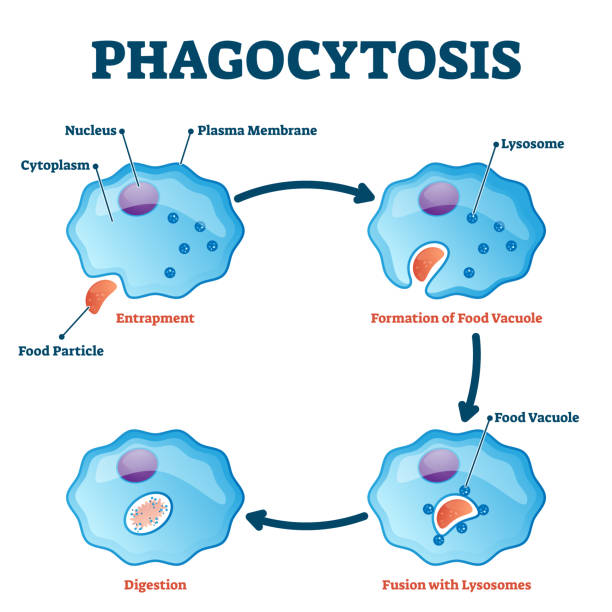
Draw and label a diagram of a mitochondrion.
B2.2.4 (AHL): Adaptations of the mitochondrion for production of ATP by aerobic cell respiration
Include:
Inner Membrane
Outer Membrane
Intermembrane Space
Cristae
Matrix
Ribosomes
DNA
Describe how the following mitochondrial structures are adapted to their function: outer membrane, inner membrane, intermembrane space, cristae, matrix, ribosome and mtDNA.
B2.2.4 (AHL): Adaptations of the mitochondrion for production of ATP by aerobic cell respiration
The mitochondria is responsible for cellular respiration (C6H12O6 + 6O2 → 6CO2 + 6H2O + energy )- using oxygen to produce ATP for energy.
The outer membrane separates the contents of the mitochondrion from the rest of the cell.
The inner membrane contains carriers and enzymes for the final stages of respiration (electron transport chain and chemiosmosis)
The cristae are tubular regions surrounded by membranes. They increase the surface area for reactions that take place toward the end of cellular respiration (oxidative phosphorylation)
The matrix is an internal cytoplasm-like substance that contains enzymes for the first stages of respiration (the link reaction and the Krebs Cycle).
The ribosomes perform protein synthesis.
the mtDNA encodes subunits of the oxidative phosphorylation complexes essential for cellular respiration and ATP production.
Describe how the following chloroplast structures are adapted to their function: double membrane, thylakoid membrane, photosystems, compact thylakoid lumen, stroma, ribosome and cpDNA.
B2.2.5 (AHL): Adaptations of the chloroplast for photosynthesis
The chloroplast is adapted to perform photosynthesis, where carbon dioxide, water, and light are used to produce energy in the form of glucose, water, and oxygen (6 CO2 + 12 H2O + light → C6H12O6 + 6 H2O + 6 O2)
The double membrane isolates parts and enzymes in the chloroplast from the cytoplasm and controls the entry and exit of materials for the chloroplast.
The thylakoid membrane has an extensive surface area which helps absorb more light for photosynthesis.
Photosystems capture electrons that are excited by the sunlight.
Compact thylakoid lumen is a small space with low volumes of fluid within the thylakoids. This allows a faster accumulation of protons to create a concentration gradient.
Stroma is a region similar to the cytoplasm of the cell and the matrix of the mitochondria. It is the region where enzymes needed for the Calvin cycle (light-independent reaction) can work.
Ribosomes are used for energy conversion and carbon fixation by photosynthesis.
cpDNA encodes part of the genetic information needed to fulfill chloroplast function (including processes like photosynthesis).
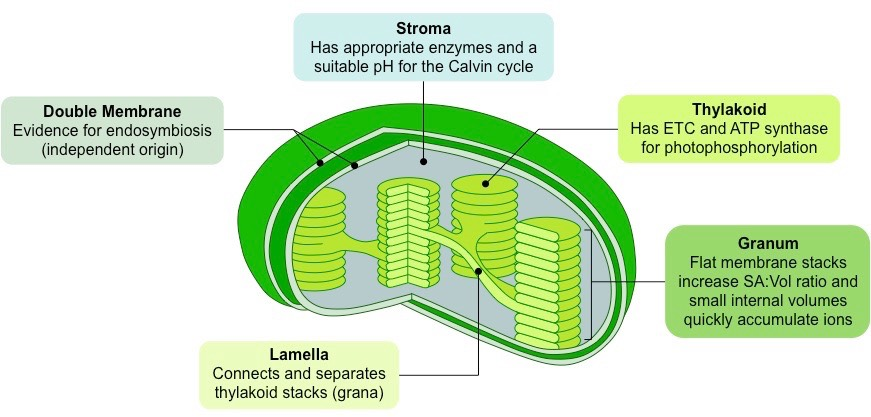
Describe the structure and function of the pores in the nuclear membrane.
B2.2.6 (AHL): Functional benefits of the double membrane of the nucleus
The nuclear membrane has many pores that extend through both layers of the envelope. A nuclear pore is much larger than a channel protein in the plasma membrane.
Nuclear pores allow ions and small molecules to diffuse between the nucleoplasm (nuclear material) and the cytoplasm. It imports RNA-protein complexes that become ribosomes in the nucleolus and proteins (histones, DNA polymerases, RNA polymerases, transcription factors, splicing factors). Pores export mRNA for translation in the cytoplasm and synthesized ribosomes to the ER or cytoplasm.
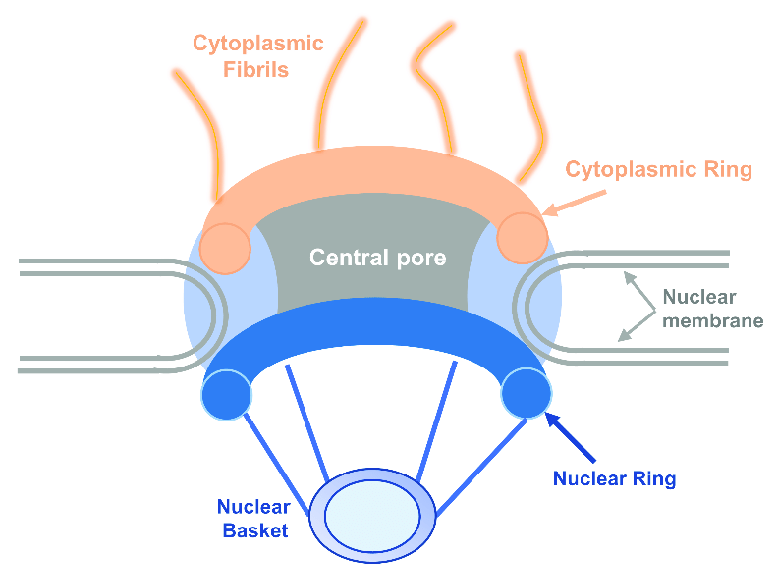
Describe the breakdown and reformation of the nucleus during mitosis.
B2.2.6 (AHL): Functional benefits of the double membrane of the nucleus
During prophase, the nuclear breaks down and moves the edge of the cell, which allows DNA structures to move. The nuclear envelope breaks apart to become vesicles that can freely circulate in the cytoplasm.
Once DNA is correctly positioned at the end of mitosis (telophase), vesicles attach to the surface of highly condensed chromosomes. Then, it undergoes changes to reform the nuclear envelope.
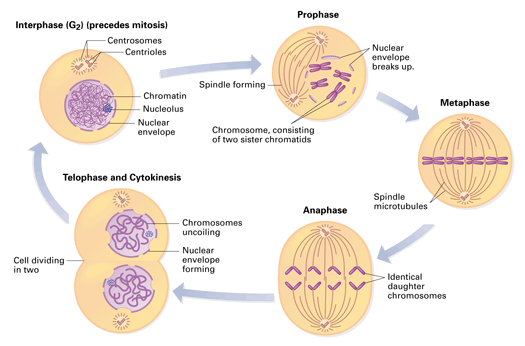
Outline the structure of ribosomes.
B2.2.7 (AHL): Advantages of compartmentalization in the cytoplasm of cells
Ribosomes are cytoplasmic organelles responsible for protein synthesis. found in both prokaryotic and eukaryotic cells. Ribosomes in parokaryotes are slightly smaller than those in eukaroytes.
Ribosomes are made of dozens of proteins arranged of a scaffald of ribosomal RNA (rRNA). It has 2 subunits, each with specialized attachment sites that allow amino acids, mRNA, and tRNA to bind to.
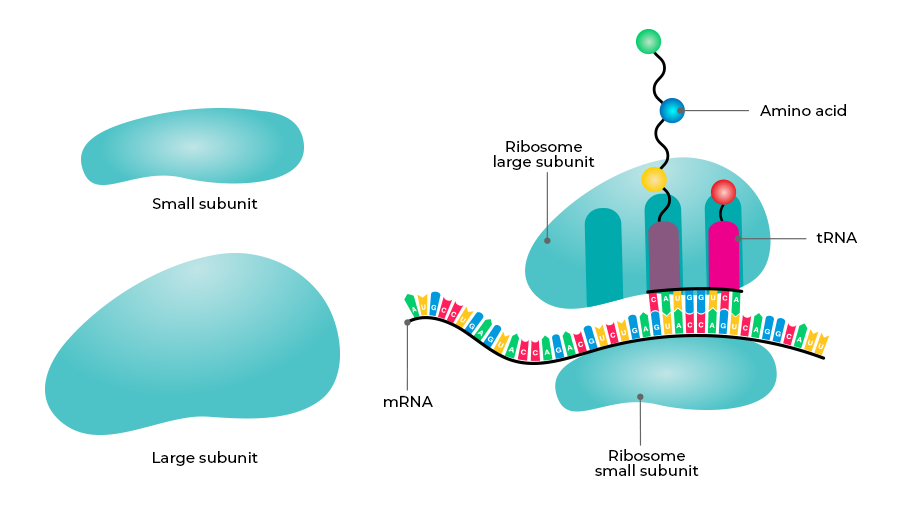
Compare the structure and function of free ribosomes and those bound to the rough endoplasmic reticulum.
B2.2.7 (AHL): Advantages of compartmentalization in the cytoplasm of cells
Free ribosomes float in the cytoplasm of the cell, while bound ribosomes are attached to the rough endoplasmic reticulum.
Free ribosomes produce proteins used within the cell (like cytoskeleton). These proteins are used in the nucleus, by the mitochondria, and other organelles not from the cell’s inner membrane system. Some become integral proteins in the cell membrane. Bound ribosomes produce proteins that are transported through the ER and often exported from the cell. An example includes secretory proteins (like hormones and enzymes) that are sent to the Golgi apparatus and are properly packaged for cellular exit.
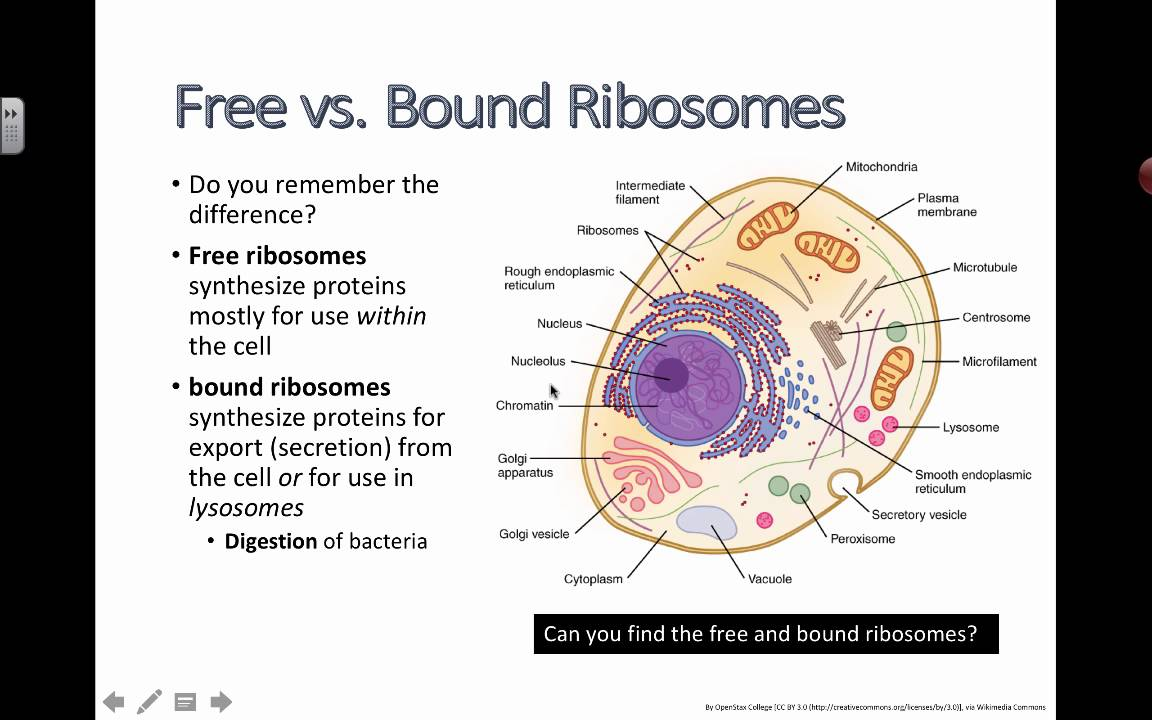
Compare the ultimate destination(s) of proteins synthesized at free ribosomes to those synthesized at ribosomes bound to the rough endoplasmic reticulum.
B2.2.7 (AHL): Advantages of compartmentalization in the cytoplasm of cells
The ultimate destinations of proteins synthesized at free ribosomes are all within the cell. The most “extracellular” thing such protein will be involved in is being an integral protein in the cell membrane. Examples include proteins for cytoskeleton, used in the nucleus, or by the mitochondria.
Proteins bound to the rough endoplasmic reticulum ultimately are exported from the cell (secreted) or used in lysosomes.
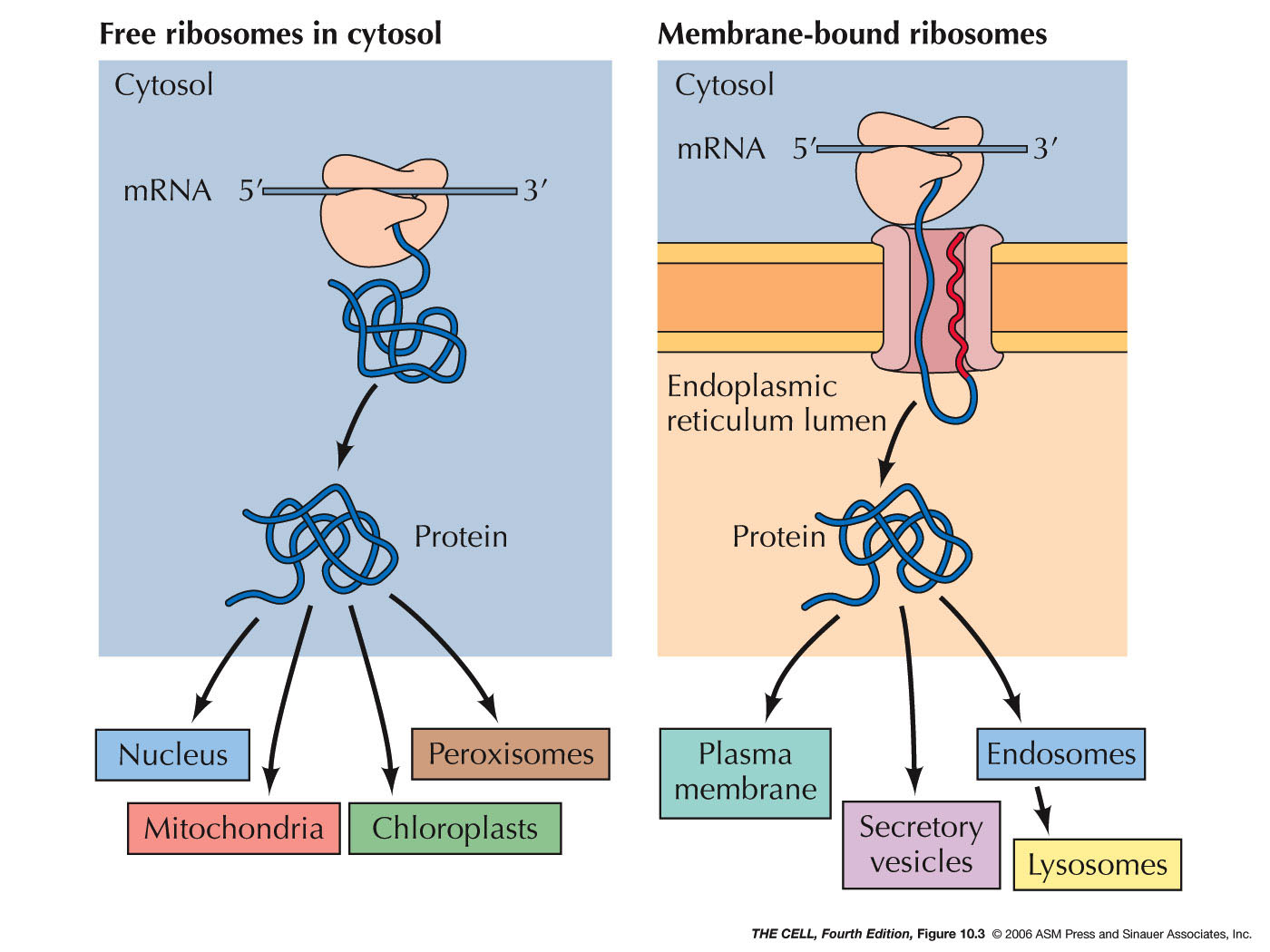
Outline the structure and function of the Golgi apparatus.
B2.2.8 (AHL): Structure and function of the Golgi apparatus
The Golgi Apparatus are stacks of flattened sacs (known as cisternae). One side of the cisternae is located near the ER (the cis side), and the other is toward the plasma membrane (the trans side).
The Golgi apparatus modifies and packs proteins or lipids into vesicles to prepare it for secretion.
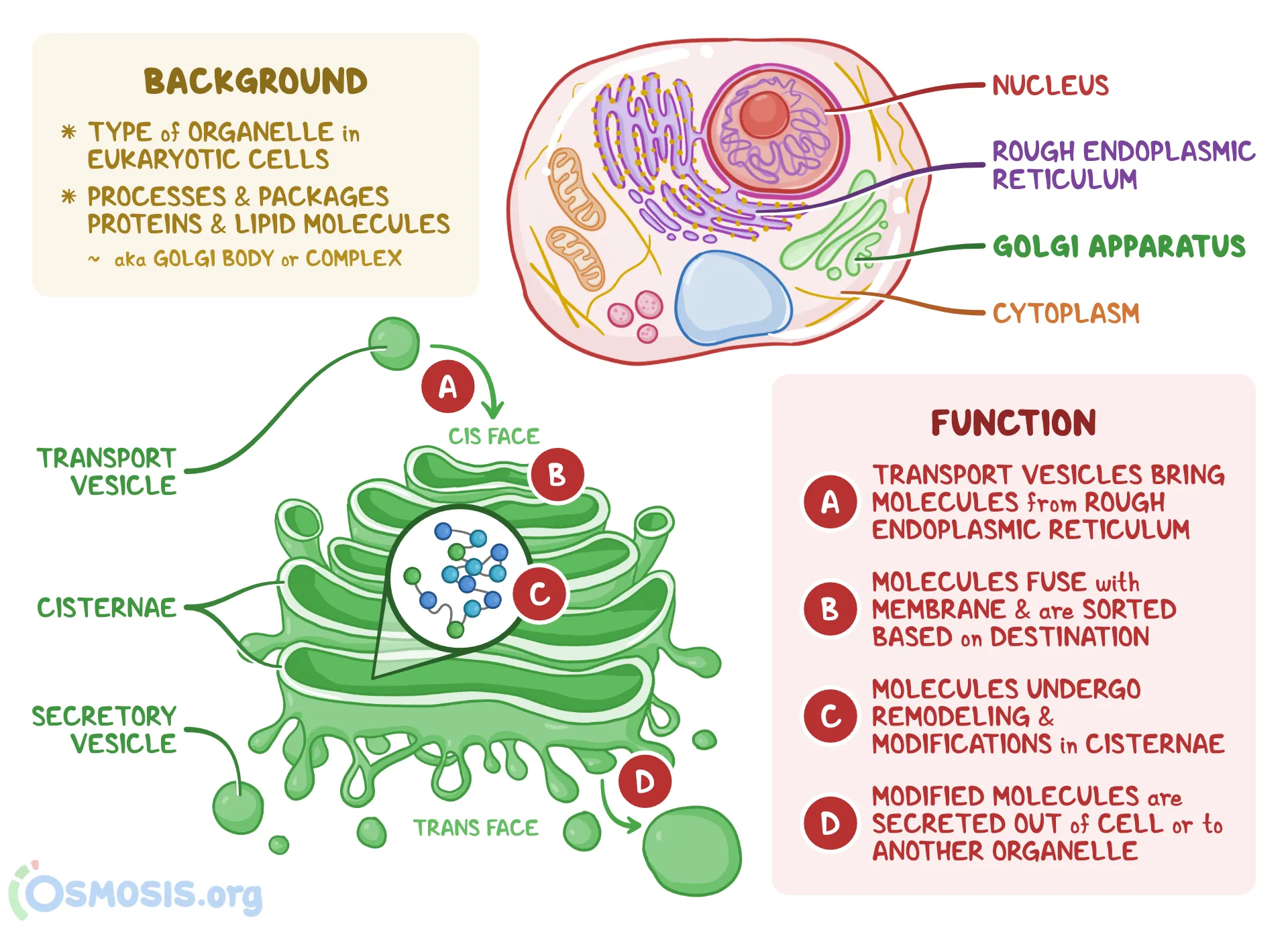
Outline the general flow of proteins to, through and from the Golgi apparatus.
B2.2.8 (AHL): Structure and function of the Golgi apparatus
Proteins packaged in a transport vesicle from the rough or smooth endoplasmic reticulum enters the cis side of the Golgi apparatus.
The protein moves through the cisternae and is modified to carry out it sspecialized function. Modifications include adding a carbohydrate to make a glycoprotein, combining with another polypeptide to form quarternary structure, or attachment of a signal chemical to direct the destination of the product (like becoming lysosomes, returning to the ER, or combining with the plasma membrane for exocytosis and secretion of the cell).
The modified protein exits out the trans side of the Golgi apparatus.
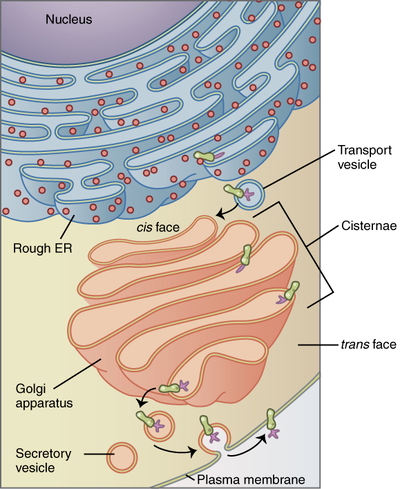
Describe the formation of vesicles in cells from phospholipid membranes, including the role of clathrin.
B2.2.9 (AHL): Structure and function of vesicles in cells
Vesicles are small membrane-bound sacs that transport and store various substances.
In receptor-mediated endocytosis, vesicles form vesicles from phospholipid membranes. Clathrin is a protein in the cell membrane that anchors certain proteins to specific sites. Clathrin lines coated pit. Receptor proteins bind to the proteins that chlathrin anchors. As a result, a collection of molecules gather in the lined pit. The pit deepens and eventually seals off, rapidly forming a vesicle.
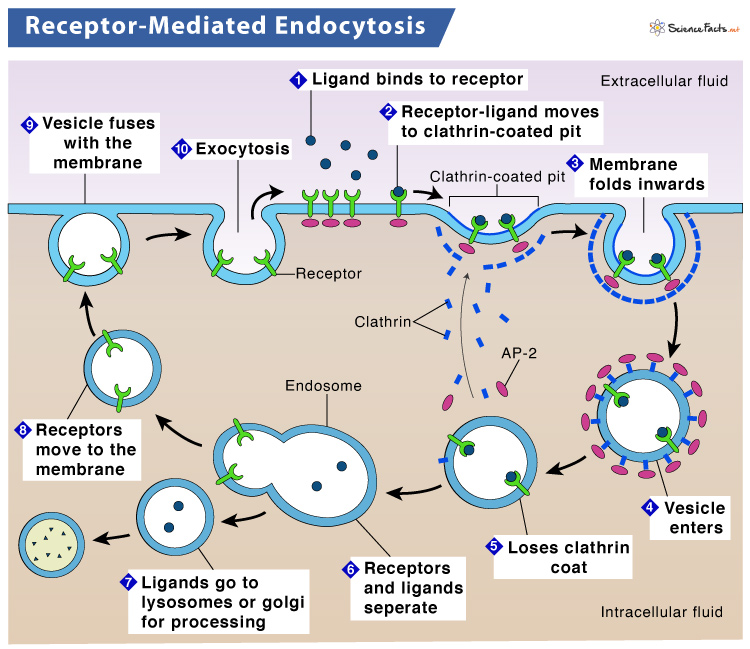
List functions of vesicles in cells.
B2.2.9 (AHL): Structure and function of vesicles in cells
Transport vesicles: Move molecules within the cell
Secretory vesicles: Transport materials to be excreted from the cell
Neurotransmitters (for nerve and muscle action) & hormones (control function in plants and animals)
Endocytotic Vesicles: Deliver organelles from outside to inside the cell
Lysosomes: Contain enzymes needed for cellular digestion and for destroying defective/damaged cells
Peroxisomes: Contain enzymes used to preak down fatty acids
Outline the consequence of vesicle fusion.
B2.2.9 (AHL): Structure and function of vesicles in cells
In vesicle fusion, a fusion pore forms. A neurotransmitter that was packaged in the vesicle can escape into the synaptic cleft.
